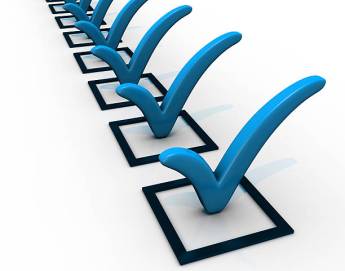Soon another recruiting class will be replaced by eager to impress underclassmen. Each with their own aspirations. This is why having a good solid recruiting strategy is the foundation to a controllable recruiting experience. In this week’s post my goal is to provide a helpful outline to use as a guide for overall recruiting process. Of course, there are exceptions just as there are exceptional athletes, as we see with Jr. High and Freshman verbal commits to Power 5 colleges.

Starting with the Freshman year of high school this guide will provide direction and checkpoints to help provide a fair bit of control as student athletes navigating the recruiting process towards the apex Senior year.
Freshman
- NCAA recruiting guidelines stipulate that student-athletes become a college prospect the first day of freshmen year in high school. Start Planning now!
- Prepare for the future as a student-athlete by making schoolwork and grades top priority — College coaches want to recruit “Student-Athletes” — not just athletes! Emphasis on “student”.
- Talk to the school guidance counselor to plan the 16 core courses that must be completed with a passing grade to become an NCAA Academic qualifier — Know the list of your high school’s approved NCAA courses at www.eligibilitycenter.org by clicking “resources” at the top of the screen.
- Begin keeping a record of scholastic and athletic achievements. This information will be vital when starting building an athletic recruiting profile.
- Don’t make the mistake of attending camps, combines or showcases too early. Attending these camps too early can hurt more than help.
- Focus on your offseason training and conditioning over the summer months .
Sophomores
- Make sure academics are on track, so stay focused and disciplined in the classroom!
- Begin researching colleges with realistic expectations of competition level and academic program. Keep your options open and make a list of schools from all across the country.
- Put together a player recruiting profile. Plan on updating that profile every semester throughout your high school career.
- Start creating a recruiting video with good video highlights. Having an expert look at your videos is helpful to putting the right film in front of college coaches.
- Visit college websites from the created list and fill out their online recruiting questionnaire
- Now is the time to start thinking about attending a camp, combines or showcases.
- Make sure to practice and prepare before attending. Learn and practice the drills tested at the camp and be ready to perform at your very best!
Juniors
- Continue to take courses that meet the high school graduation requirement and that meet NCAA initial-eligibility requirements.
- Make sure that to be on track to complete 10 of the required 16 core courses by the end of junior year.
- Junior season is very important for college recruiting so keep college coaches updated on your athletic progress.
- Register to take the SAT and/or ACT test. When registering for the SAT/ACT, be sure to select the Eligibility Center as one of the recipients {Code: 9999}.
- After September 1 prospects can recieve athletic information from college coaches.
- At the end of your junior year, register with the NCAA Eligibility Center and complete the amateurism certification questionnaire (www.eligibiltycenter.org). A fee waiver is available for students who qualify for a waiver fee. Your high school guidance counselor must request the fee waiver online through the Eligibility Center.
- Create a junior season highlight video to send to college coaches along with an up-to-date player profile. Start sending that profile along with video highlights to college coaches that match your competitive level, geographical preferences and academic interests!
- Attend at least one camp local or regional camp, combine, or showcase. Make sure to go fully prepared to be tested the necessary sports specific skills.
- After July 1st most college coaches in most sports can call prospective student athletes.
- Schedule at least three unofficial visits to college campuses over the summer. Be sure to choose colleges that have shown an interest in you or schools that fit your competitive level!
Senior
- After September 1st of your senior year Division I college coaches may call prospective student-athletes once per week during contact and evaluation periods.
- Stay in communication with as many college coaches as possible by email and phone. If your phone is ringing that is a good sign of being recruited!
- Plan to retake the SAT/ACT test early first semester of senior year if necessary to obtain a higher score
- Arrange five official visits. Prospective student athletes are allowed a total of five visits no matter what division.
- Many Division II, III and NAIA offers will take place during the senior year so it’s important to stay in touch with as many coaches as possible with timely updates of player profile information and video highlights.
- The Early Signing Period for sports other than Football is in November and runs for 7 days. Early signing period for Football is in December. Traditional Signing Period begins in February and ends August 1st. To learn the exact dates please visit: www.nationalletter.org.
Be committed,
Coach Mike
Coach Mike oversees the the recruiting of talented next-level athletes to develop a recruiting strategy to get seen, scouted and recruited. With over 20 years of experience as a coach and, as former college athlete, Mike now mentors families through the academic, athletic and financial aspects of college recruiting.